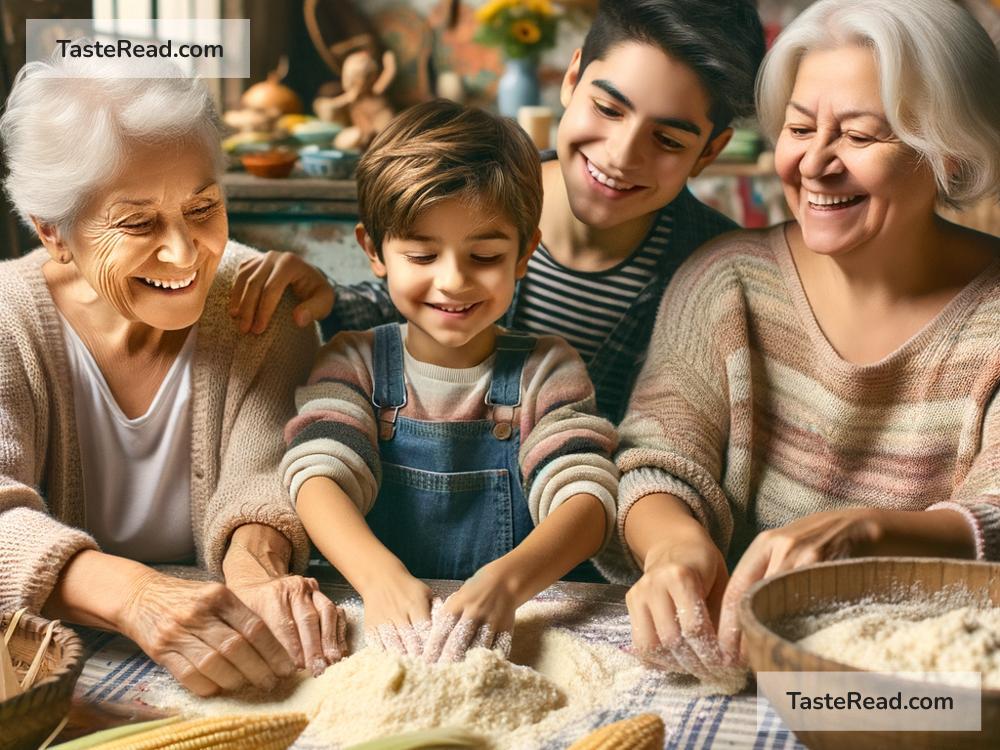The Tradition of Mexican Tamales and Their Role in Family Gatherings
Tamales hold a special place in Mexican culture, especially during holidays and family celebrations. They are more than just a tasty dish – tamales are a tradition, a labor of love, and a symbol of togetherness that brings families closer. For generations, they have been at the center of Mexican homes during important occasions, especially Christmas, New Year’s, Día de los Muertos, and other festive times.
What Are Tamales?
Tamales are a traditional Mexican dish made of masa (a dough made from corn flour) stuffed with a variety of fillings, wrapped in either corn husks or banana leaves, and then steamed until fully cooked. The fillings vary depending on the region and family preferences. Common choices include shredded chicken, pork, beef, beans, or cheese, along with flavorful sauces like green tomatillo salsa or red chili sauce. Sweet tamales are popular, too, often filled with fruit, cinnamon, or other sweet flavors.
The wrapping and steaming process makes tamales soft, flavorful, and easy to eat. The corn husk or banana leaf is not eaten but serves as a specially wrapped package that keeps the tamales moist and holds all the delicious flavors inside.
Tamales and Holidays: A Delicious Tradition
Tamales are not just food – they carry cultural meaning and bring people together. Holidays in Mexico, like Christmas and New Year’s, are often called “tamale season.” Families make tamales in large batches, sometimes hundreds at a time, to share with loved ones, neighbors, and friends. Each tamale is made with care, and the process can take several hours or even days to complete. This is why tamale-making is often a collaborative activity, involving multiple generations of family members.
Tamales are often served alongside other holiday favorites like pozole (a hearty soup), champurrado (a chocolate-based hot drink), and rosca de reyes (a sweet bread served on Three Kings’ Day). Combined, these foods create a festive feast that everyone looks forward to.
For many, tamales symbolize prosperity and shared abundance. Making them in large quantities feeds many people and reflects the importance of sharing food, joy, and love during special times.
The Tamalada: A Family Bonding Ritual
The making of tamales is more than just cooking – it’s an event in itself. Many families host a “tamalada,” a gathering where everyone works together to prepare tamales. Often held a few days before a holiday, the tamalada combines teamwork with laughter, storytelling, and bonding. Grandmothers teach the younger generations how to spread masa on the husks or fold the tamales correctly. Aunts and uncles work side by side, while cousins join in or play nearby. Music, drinks, and snacks keep the mood lively as the kitchen becomes the heart of the home.
The tamalada highlights the importance of tradition in Mexican culture. Passing down recipes and techniques is a way for families to preserve their identity and stay connected. Even in modern times, when busy schedules make it harder to gather, the tamalada serves as a reminder of the value of family relationships.
Every Tamale Tells a Story
Tamales are unique to each family. Recipes are often passed down from generation to generation, with slight variations that reflect individual tastes or regional influences. In northern Mexico, tamales might include spicy meats or dried chili peppers, while in southern Mexico, tamales made with banana leaves and mole sauce are common. Sweet tamales, bright pink and flavored with strawberry or pineapple, are a favorite for children.
Each tamale represents a piece of history, culture, and family character. They are a way of celebrating heritage while creating new memories. Families cherish the process because it gives them the chance to reconnect in a fast-paced world.
The Role of Tamales Today
Even as lifestyles change, tamales remain a constant in Mexican holiday celebrations. With their rich flavors and connection to tradition, tamales continue to remind people of home, family, and the joy of togetherness. Many Mexican-Americans also enjoy tamales as a way to stay connected to their roots, sharing the tradition across generations.
While making tamales was once exclusively a homemade activity, you can now find tamales at Mexican restaurants, bakeries, and food stands, especially around the holiday season. For busy families, this provides an option for enjoying tamales without the labor-intensive preparation. However, homemade tamales – made with love during a tamalada – are still considered the heart of holiday traditions.
Sharing Tradition Through Tamales
Tamales are more than just food. They represent care, connection, and culture. During holidays, they help bring families together to honor traditions, share stories, and create new memories. Whether you’re spreading masa on husks at a tamalada or enjoying tamales at a gathering, the experience is always rewarding.
Tamales remind us of the warmth of family, the joy of sharing, and the beauty of carrying traditions forward. So, the next time you bite into a tamale, remember that you’re eating something filled not just with delicious ingredients, but with history, love, and the spirit of togetherness.


